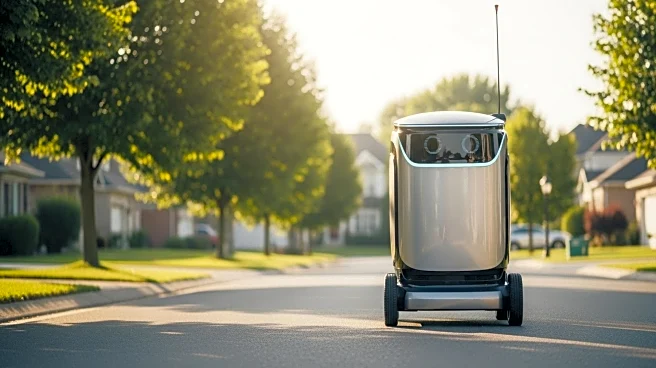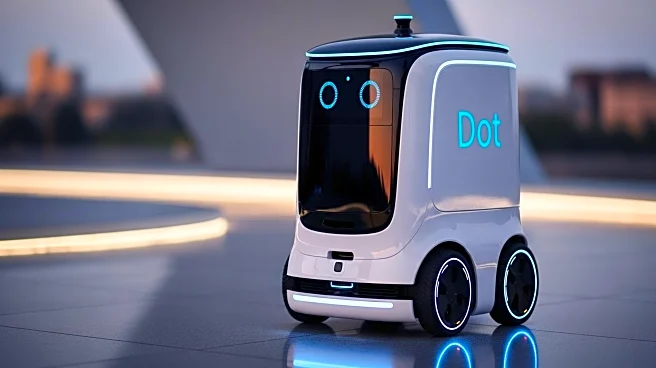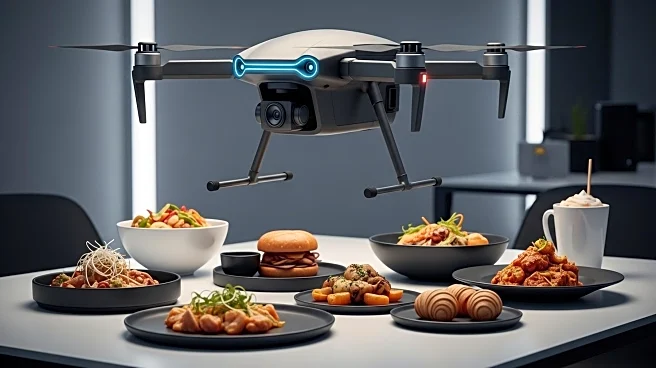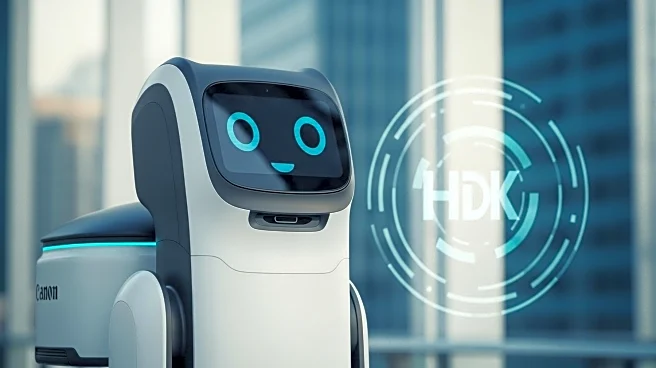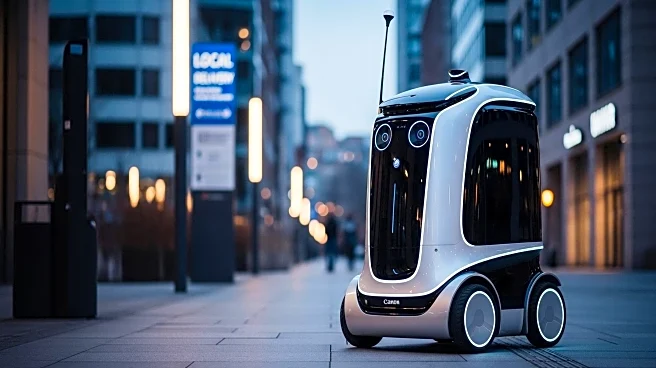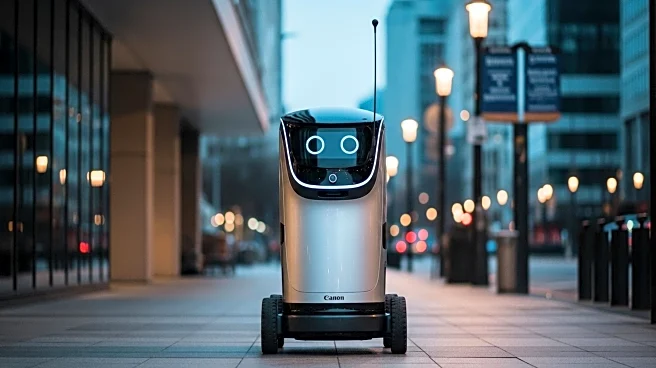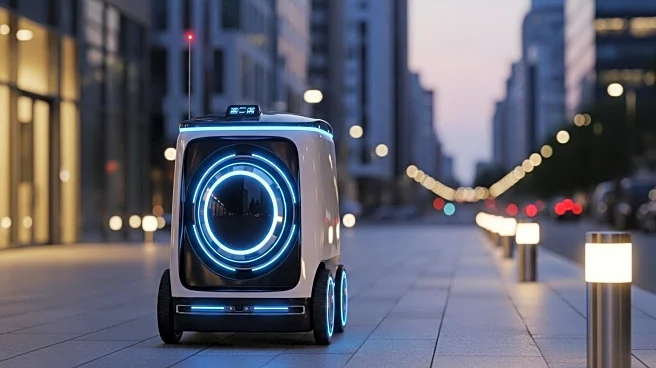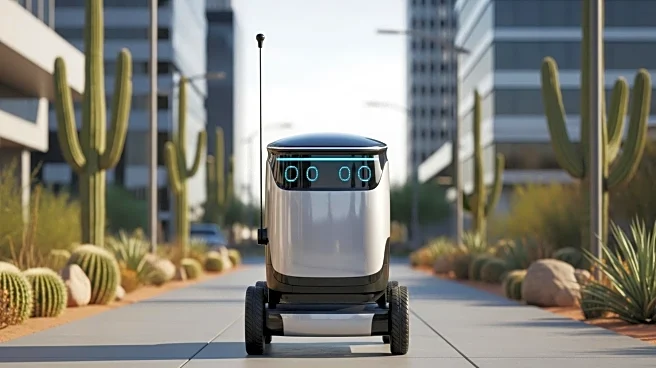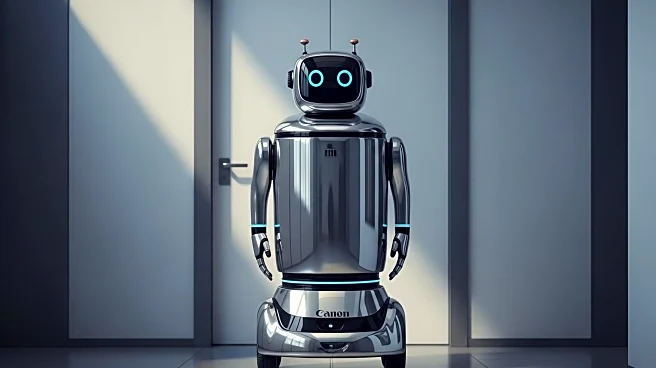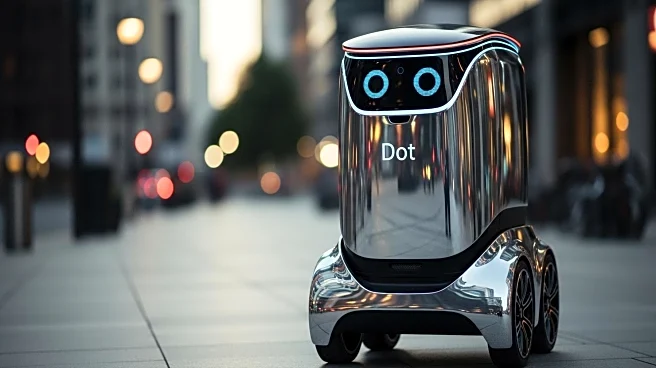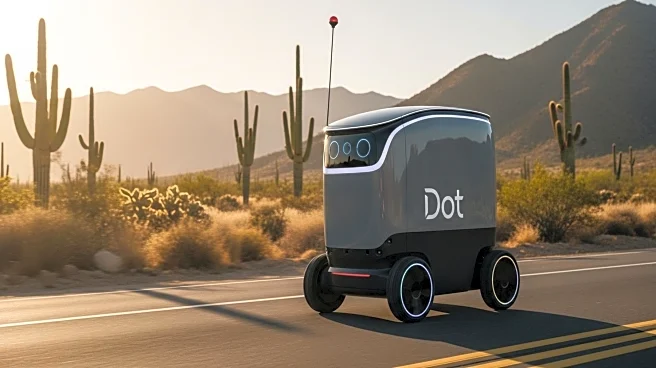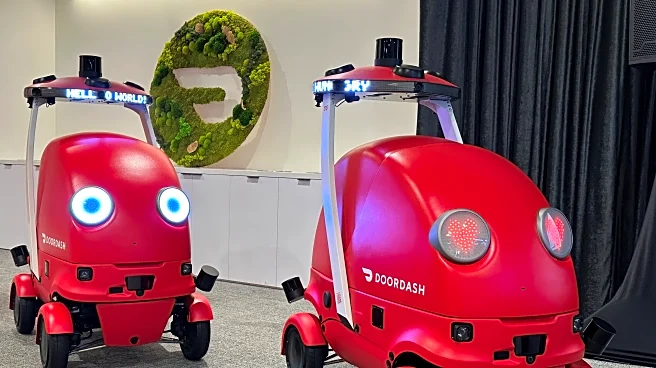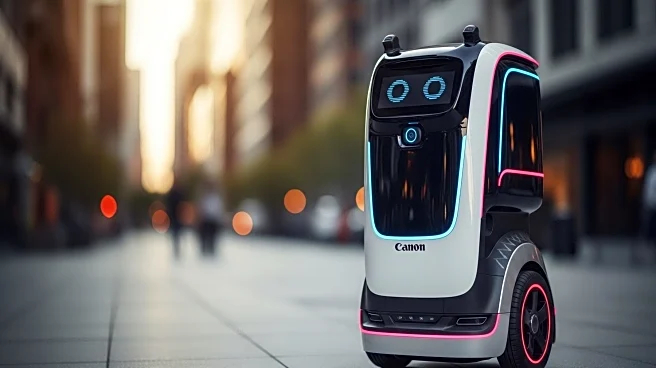What is the story about?
What's Happening?
DoorDash has unveiled a new delivery robot named DOT, designed to enhance suburban delivery services. The compact electric robot aims to fill the gap between slow sidewalk bots and full-sized delivery vehicles. DOT is equipped with advanced navigation technology, including cameras, radar, and LiDAR sensors, allowing it to travel on roads, bike lanes, sidewalks, and driveways. The robot can carry up to 30 pounds of goods and operates for six to eight hours on interchangeable batteries. Currently, DOT is being tested in Tempe and Mesa, Arizona, as part of an early-access program. DoorDash's AI-driven Autonomous Delivery Platform dispatches DOT based on factors like speed, cost, and geography, optimizing delivery routes and minimizing wait times.
Why It's Important?
The introduction of DOT represents a significant step in the evolution of last-mile delivery services, potentially reducing costs and carbon emissions associated with traditional delivery methods. By utilizing robots for small orders, DoorDash aims to improve efficiency and service speed, which could enhance customer satisfaction. However, the deployment of delivery robots raises concerns about safety, accessibility, and the potential impact on gig economy workers. Critics argue that robots may obstruct pathways and question their necessity, given their limitations in navigating complex environments. The success of DOT could influence the future of autonomous delivery, prompting other companies to explore similar innovations.
What's Next?
As DoorDash continues testing DOT in Arizona, the company plans to expand its deployment if the trials prove successful. The broader rollout will depend on public acceptance, regulatory approvals, and the ability to address safety and accessibility concerns. DoorDash's investment in autonomous delivery technology could lead to further innovations and partnerships, potentially reshaping the logistics industry. The company will need to navigate regulatory challenges and public perception to ensure the successful integration of robots into everyday delivery operations.
Beyond the Headlines
The deployment of DOT highlights the ongoing debate over the role of automation in the workforce. While DoorDash emphasizes that robots are meant to complement human drivers, there are concerns about job displacement and the erosion of wages for gig workers. Additionally, the introduction of delivery robots raises questions about urban planning and infrastructure, as cities may need to adapt to accommodate these new technologies. The development of safety and governance standards will be crucial to ensure the responsible deployment of autonomous delivery systems.
AI Generated Content
Do you find this article useful?
